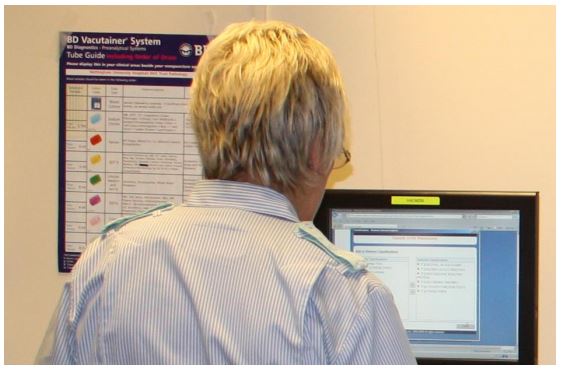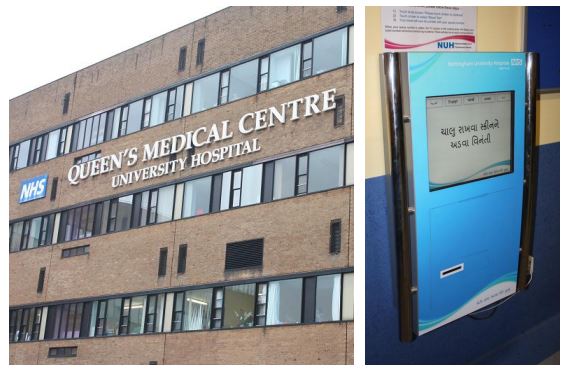Case Study - Nottingham University Hospital
Overview
Nottingham University Hospitals NHS Trust (NUH) is one of the largest acute teaching trusts in the country. It is made up of Queen’s Medical Centre (QMC), Nottingham City Hospital and Ropewalk House, a facility in Nottingham City Centre where hearing services are based.
The Trust provides acute and specialist services to 2.5 million people within Nottingham and surrounding communities from QMC, City Hospital campuses and Ropewalk House.
Recently, NUH decided a new system was needed to streamline the blood taking process and overall patient flow, in the Out-patients' blood taking department.
The Challenge
NUH had set the following goals, as part of the business and service requirements:
-
A patient flow management solution, that would cut down waiting time, and reduce the number of patients abandoning – leaving without completing the medical procedure.
-
A suitable staff management solution, that would enable dynamic load-balancing between the ward's different services.
-
Tools to improve the overall patient experience, by addressing issues such as the different languages spoken by visitors, or providing information to patients.
The Solution
Q-Flow was installed in Nottingham University Hospital during Q4 of 2010 to support the blood taking department. The results show a significant improvement for patients:
-
Wait times during peak periods improving by up to an amazing 50%.
-
No wait at all during off peak periods.
-
Shorter waiting times have also significantly reduced the number of patients who take a ticket and leave before having their blood taken.
Taking advantage of the Q-Flow "Print-On-Demand" module, blood labels are automatically printed by Q-Flow, removing the need for nurses to hand write labels for every test undertaken, creating a significant efficiency for every staff member.
Touch screen PCs were installed into each treatment bay, with a clinical grade keyboard built in for ease of access and entering patient data. Using this specifically designed hardware nurses are able to quickly find patient records, using a seamless integration solution behind the scenes to retrieve patient records from an existing Oracle based system.
Steve Davidson, Service Manager, Haemostasis & Thrombosis Services: "The introduction of Q-Flow in out-patients has enabled us to gain a better understanding of demand for our service. Since its introduction we have built a wealth of data that enables us to predict the days and times when additional staff may be required. It also tells us when our quiet periods are so that we can route staff resources to other areas”
Steve Davidson added “We can now further analyse staff performance and ensure that the skill mix is correct, this in turn helps us deliver a more efficient service.
“This system automatically replaces key patient information shown on the screens to other languages. For example, important messages about patient safety or hand hygiene can be shown in any language as chosen by the patient when they collected their ticket. After that patient’s number is called all messages on screen will change again to reflect the languages of choice for the remaining patients.”
“Feedback from staff and patients has been excellent and patients have noted a real reduction in waiting times and better organisation in the service. Patients have engaged in the development and provided us with ideas for improvements to the information pages shown on the screen. We are really encouraged by these suggestions and are continually working to make patient suggested improvements.”
Further integration with a hospital wide appointment solution allows improved communication channels between departments, giving all wards access to manage patient blood tests and schedule them according to individual patients and the treatment required.



